フィールド日記
2025.02.21
バイカオウレン
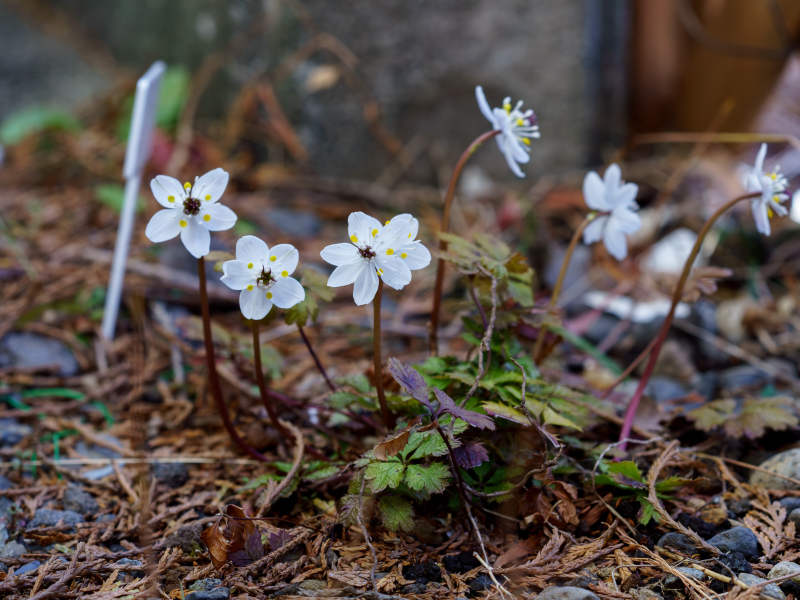
A "Baika-Ouren (バイカオウレン)" plant is in bloom on the balcony in front of the 10th-grade classrooms. They originally grow on the floors of coniferous forests. They are known as the plants loved by Dr. Makino Tomitaro, who is regarded as the father of plant taxonomy in Japan. The one in the photo was bought when a science teacher visited the Kochi Prefectural Makino Botanical Garden and was planted here.
2025.02.18
オニシバリ
オニシバリが咲いています。樹林内に見られる落葉低木ですが、多くの落葉樹とは反対に冬に葉をつけて、夏に落葉します。ふつうオニシバリの花は、がくの先端が4枚に分かれて花弁状になりますが(写真2枚目)、1枚目の写真のように6枚に分かれた花を見つけました。同じ木の他の花はふつうの花だったので、たまたまこの花だけが変異したようです。
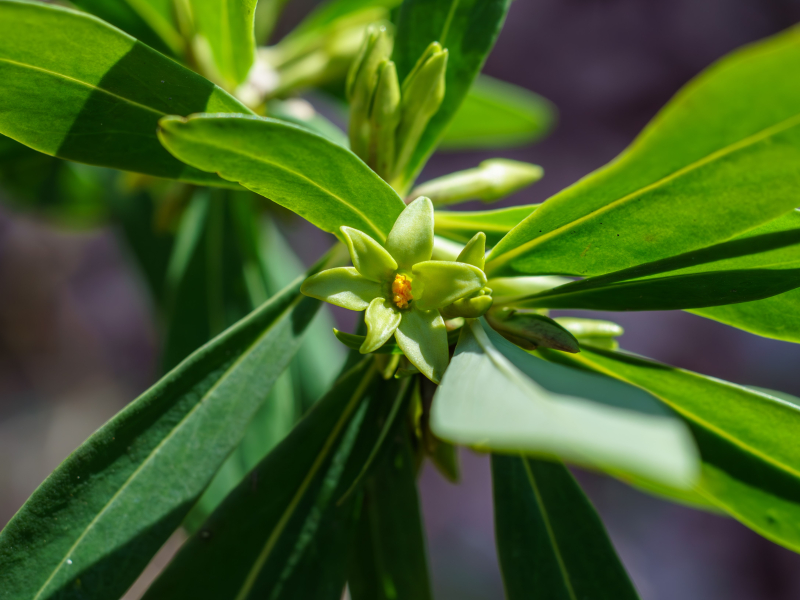
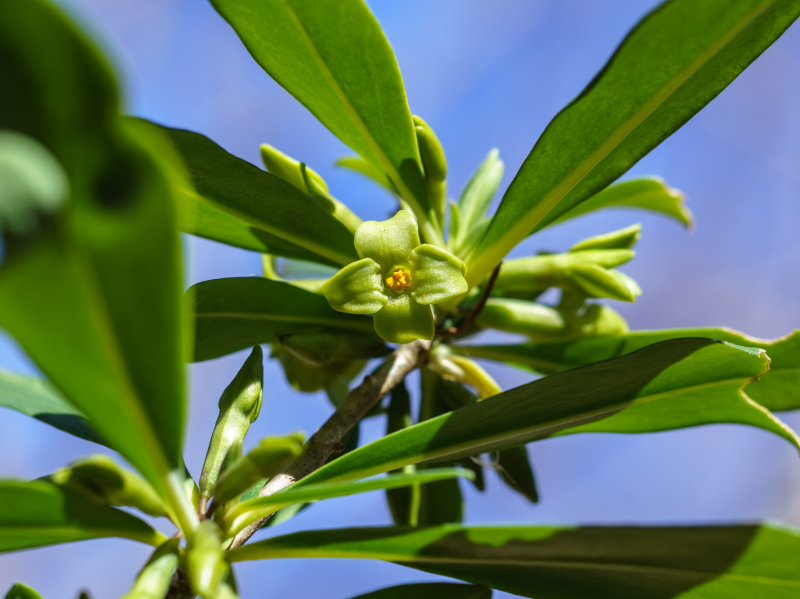
2025.02.14
オオバノイノモトソウ
ヒノキ林にオオバノイノモトソウが見られます。日の当たる石垣から樹林内まで広く分布するシダ植物です。胞子のう群は羽片の縁につきます。和名は近縁種のイノモトソウに比べて大型なことに由来します。
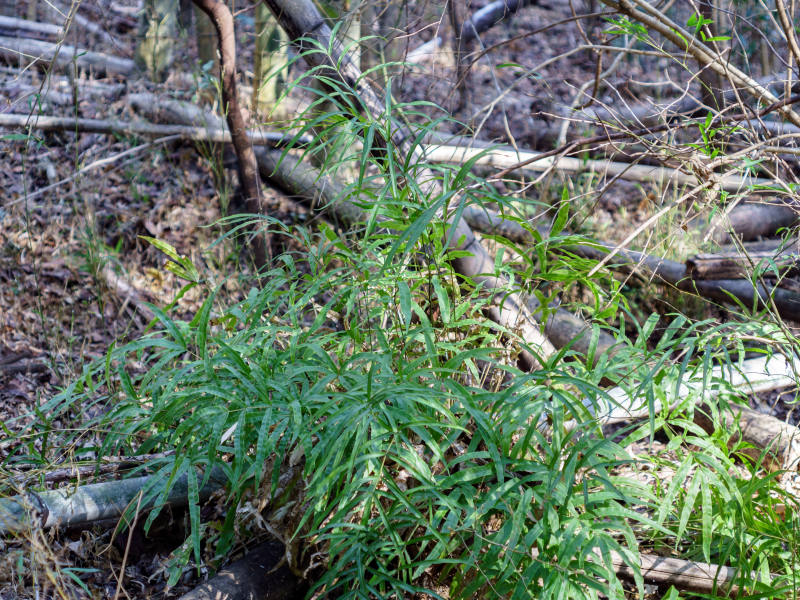

2025.02.11
コシダ
ヒノキ林でコシダが見られます。日当たりのよい崖地や林床などに生えるシダ植物です。葉は数回二叉に分枝しながら成長していきます。和名は小シダの意味で、同じ科のウラジロに比べて小さいことに由来するようです。
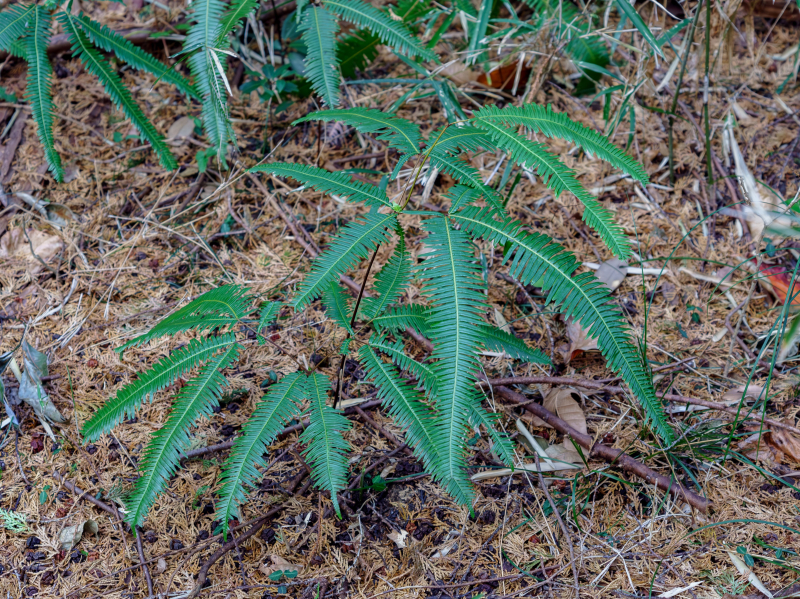
2025.02.07
イノデ
ヒノキ林でイノデが見られます。全長1m以上にもなる大型のシダ植物です。イノデは近縁種が多く、また雑種もつくりやすいため、同定が難しい仲間です。葉柄にある鱗片や胞子のう群のつく位置などが見分けるポイントになります。
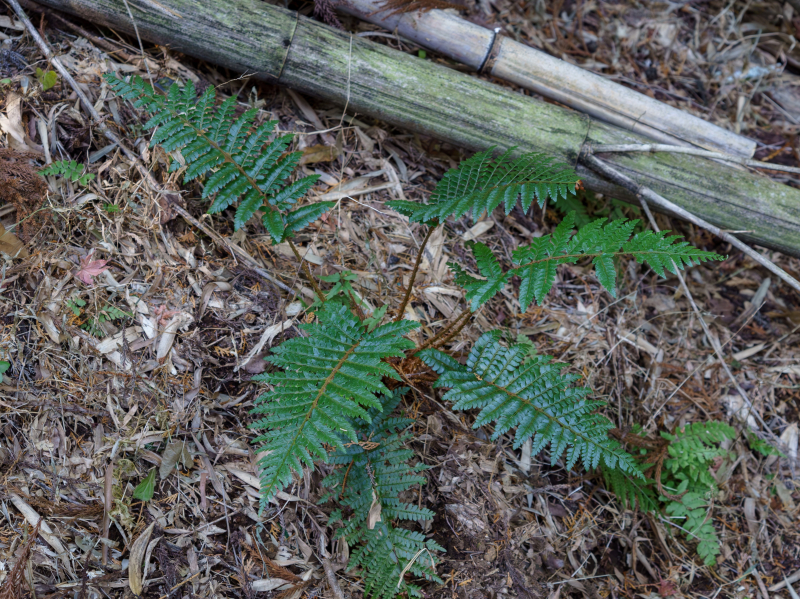
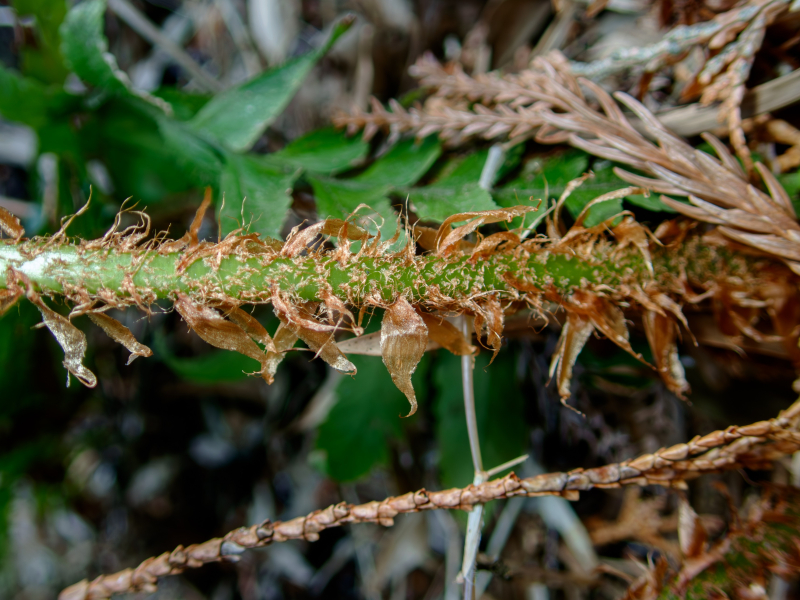
2025.02.04
サザンカ
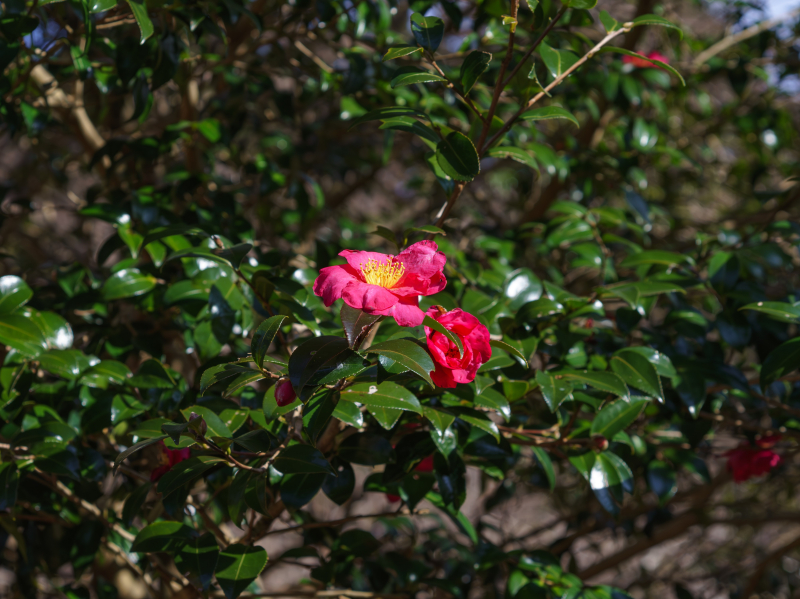
2025.01.31
オオキジノオ
ヒノキ林の林縁でオオキジノオが見られます。暖地の林内に生えるシダ植物です。近縁のキジノオシダとよく似ていますが、やや大型になり、栄養葉の羽片に柄があることで区別できます。
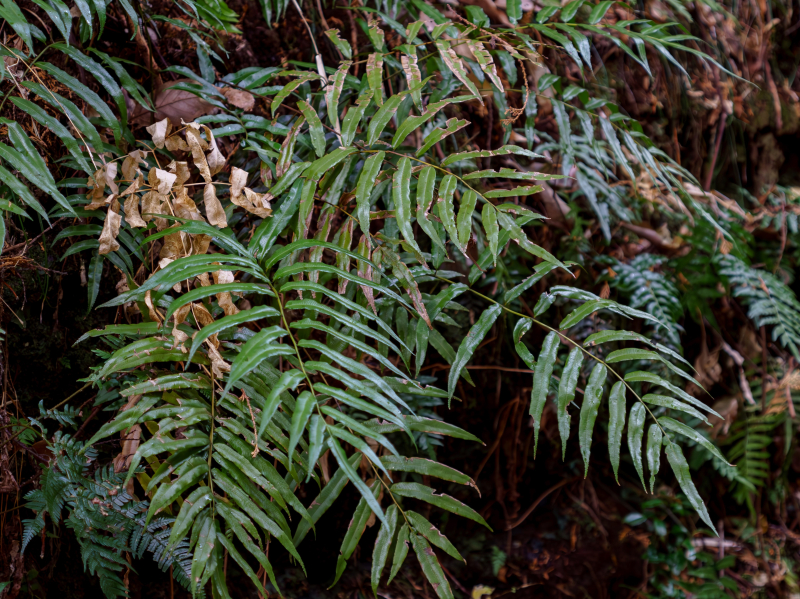
"Oo-Kijinoo (オオキジノオ)" fern plants are found on the edge of the Japanese cypress woodland. They are a fern plant that grows in the forests in warm climates. They look like the relative species called "Kijinoo-Shida", but they grow larger and their pinnae of sterile fronds have stalks.
2025.01.28
キジノオシダ
ヒノキ林の林縁でキジノオシダが見られます。暖地の林内に生えるシダ植物です。胞子をつける葉(胞子葉)とつけない葉(栄養葉)で形が異なっており、写真は栄養葉です。和名は、葉の形をキジの尾羽に見立てたものです。
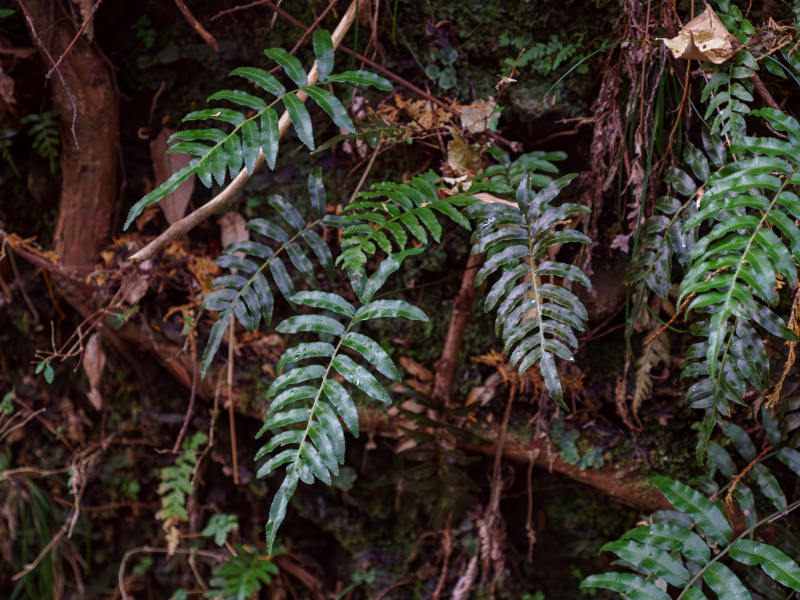
2025.01.24
クリハラン
ヒノキ林の林縁でクリハランが見られます。樹林内の湿った岩上や林床に生えるシダ植物です。葉は切れ込みがなく、シダらしくありません。和名は葉の形がクリの葉の形に似ていることに由来します。
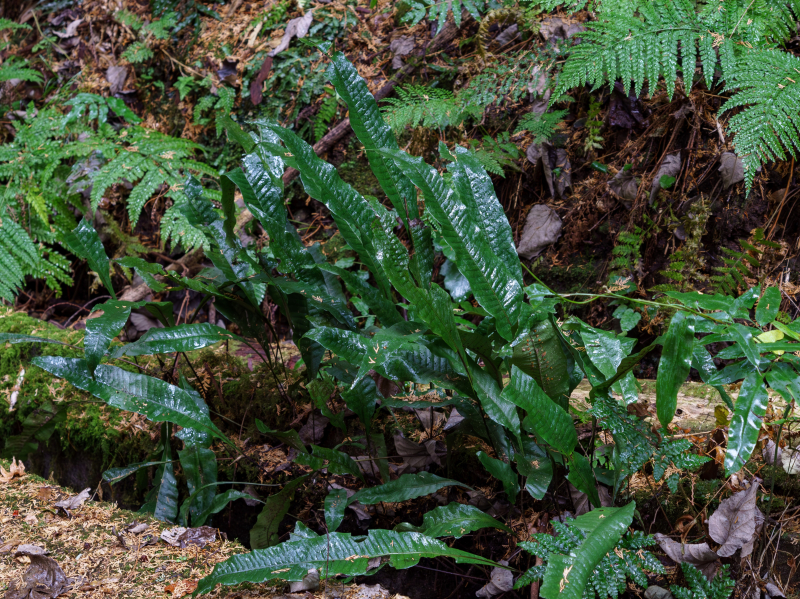
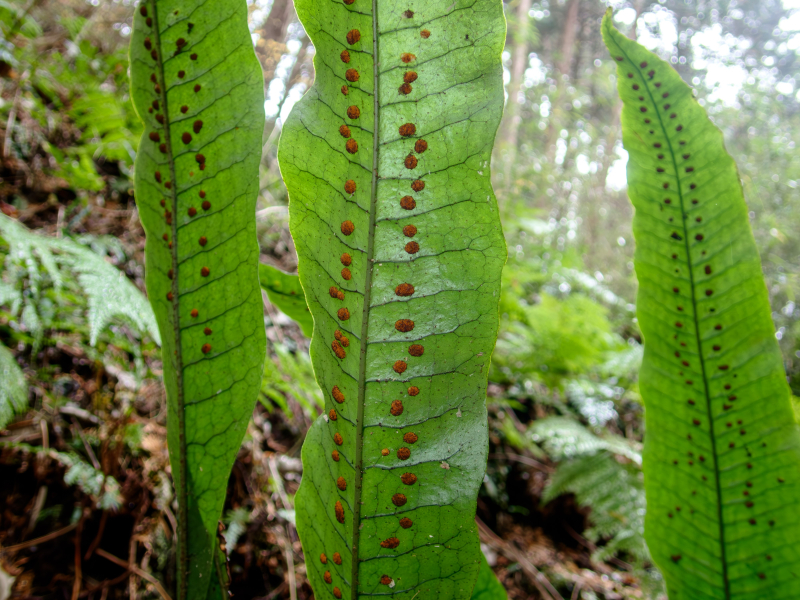
2025.01.21
イワガネゼンマイ
ヒノキ林の林縁でイワガネゼンマイが見られます。大型のシダ植物です。前回紹介したイワガネソウと近縁で、見た目もよく似ています。羽片の先が急にとがることや、羽片の脈が編目状にならないことが特徴です。
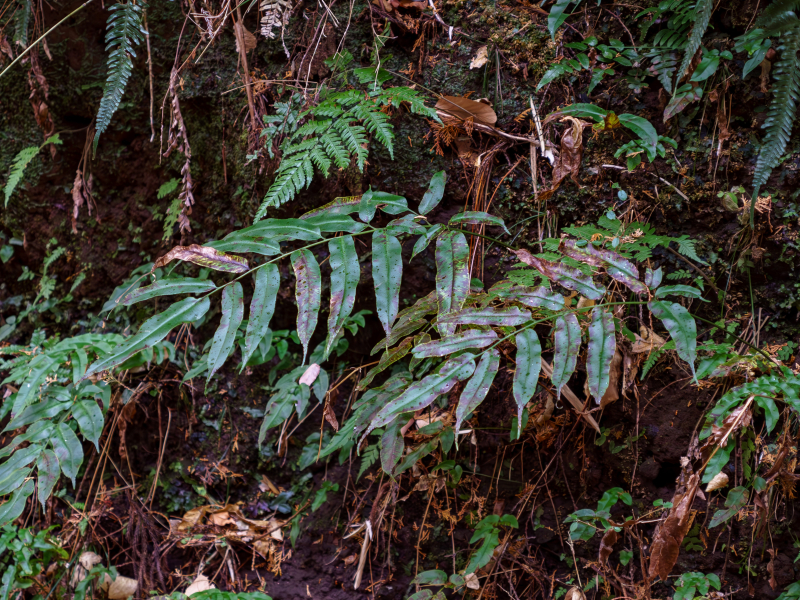
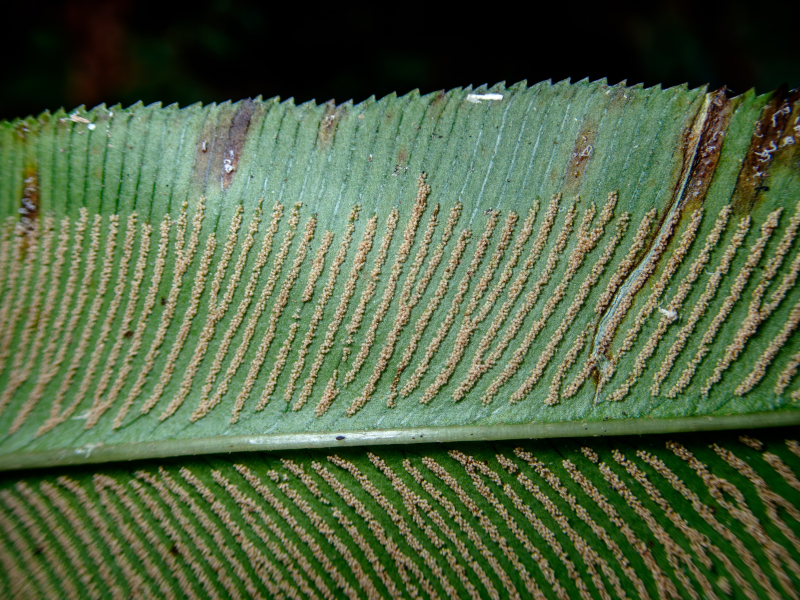
"Iwagane Zenmai (イワガネゼンマイ)" fern plants are found on the edge of the Japanese cypress woodland. They are a large fern plant. They are a relative species to the "Iwaganesou," which I posted in my last diary and they look alike. "Iwagane Zenmai" fern plants are characterized by the abrupt pointiness of the tips of the feather fragments and also by the fact that the veins of the feather fragments do not form a braided pattern.

















